How To Blend Colors In Paint
What techniques practise I employ for paint blending on miniatures? This is a very mutual question, but not a simple 1 to answer. There are many means to blend paint on a miniature. Each method has an advantage and disadvantage. In fact, some techniques that you may notice difficult, others might discover easy. And, vice versa. In principle, blending paint involves any technique that creates a transition between two layers of paint.
In this commodity, I share my experience with the techniques that I've practical over the years of painting a lot of miniatures. As someone who likes to experiment and observe new ways of doing things, I've distilled some of what I learned into curt summaries.
More: BEST 5 MODEL Paint MIXERS AND SHAKERS
Read on for blending techniques for painting miniatures and models.
What is pigment blending?
In painting miniatures, an creative person can utilize a HUGE number of methods to reach the aforementioned outcome.
When blending paint on a model, the painter is applying layers of paint and creating a transition between the applications.
The transition or blend between ii paint applications (either of a different color, value or tone) requires some knowledge of how paint behaves on the castor and the working surface.
In principle, pigment blending is unproblematic. Take two layers of pigment and create a transition. Of class, the alloy between paint applications can exist coarse or smooth.
A professional or competitive painter may be able to achieve very shine blends. In many cases, the transition is so clean that fifty-fifty nether magnification or under brilliant lights, the layers of pigment are imperceivable.
Why alloy paint on a miniature?
In all of miniature painting, the art of making a model come up alive requires creating a sense of identify.
The simplest mode to do this is calculation contrast. This can be washed with acrylic or watercolor washes. Or, but using specially formulated "contrast pigment".
If you await at most comic books, for example, the brilliant colors confronting black line fine art pops off the page. In miniature painting, well-nigh artists effort to create the same "3D popular".
In fact some kinds of miniature pigment styles have emerged with a comic book "expect".
Blending pigment on a miniature takes the contrast game a pace further. Paint blending allows you to create contrast, while maintaining a sense of realism.
Blending paint removes the comic book or cartoony expect.
And, if done well, paint blending can exercise amazing things for a model'south terminal appearance.

For case, Object Source Lighting (OSL) crave some level of paint blending technique. If you're looking for a not-metal metal (NMM) issue on your miniature, then knowing how to smoothly blend paint layers will go essential (check out my top iii websites showing you how to paint NMM).

Where do I begin?
If you're just starting out at the hobby of painting miniatures, blending might seem daunting.
Don't fret. We all starting time somewhere.
I know for a fact that with abiding time in the hobby chair, a bit of elbow grease, a few tips from your friendly painting community, you lot'll make progress fast.
Practice, practice, practice.
Don't be afraid to experiment and fail.
Below is a summary of blending techniques that I ordered from easiest to hardest. Some may argue the ordering of technical challenge, but I think these blending techniques build upon each other.
As you larn the easy techniques, you gain noesis on how to overcome some of the skill hurdles in the more than advanced miniature painting methods.
8 about common blending techniques for painting miniatures and models:
1. Dry brushing
Dry brushing is a powerful blending technique.
For more than details about dry brushing bank check out this full drybrushing guide.
Dry brushing is an approach that applies pigment pigment to the raised surfaces of a miniature. This approach besides gives you a lot of control. Subtle applications with a dry brush volition create a gradual build upward of pigment.
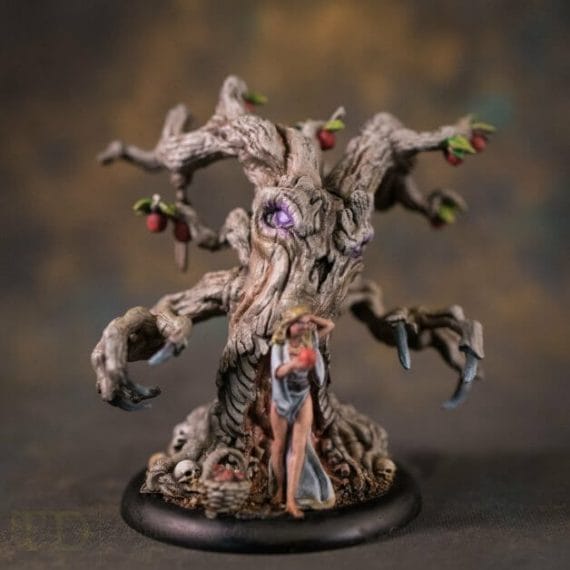
The greatest advantage of drybrushing is that it is relatively fast and very easy to learn. For this reason alone, it is what I recommend about miniature painters should learn.
Even professional mini painters use dry brushing for their competitive works.
For tabletop quality miniature painting, dry brushing more often than not creates a coarse, powdery look.

You can, however, reach very smooth transitions between colors and pigment layers past applying multiple, very light coats.
Here'south how you go smoother blended transitions with dry castor:
Every bit you build up more than of your highlight colour, slowly shrink the expanse that you are dry brushing.
This volition subtly add pigment to a smaller area of the model, which naturally creates the slope from the chief base color to the dry brushed area color.
In competitive, professionally applied dry brushed models, information technology is possible to accept more than xx-xxx low-cal coats of dry brushed layers.
Of course, if you're simply looking for a adept quality paint chore, you won't need then many dry out brushed layers for a swell paint blended await.
If yous're wondering what my favorite brush is for dry brushing, it'south a my trusty Citadel Medium Base brush.

ii. Layering and glazing
There are and then many definitions for pigment layering in regards to creating composite transitions. I would not consider this an advanced painting technique, but does take some practice.
For blending, the utilise of paint layering to create composite transition means using very thin paint practical in multiple and progressively shrinking areas on the model.
Pigment layering can be used to blend highlights or shadows with either light or dark value paint, respectively.
Layering can apply ii kinds of paints for blending transitions:
- Opaque paint
- Translucent paint (e.g., glazes)
With opaque pigment, layers of paint are applied in progressively smaller and smaller areas over the same area. This allows the underlying base paint to testify through less and less.


The slow buildup of the new color through the improver of smaller surface applications of opaque paint layers is the foundation for creating the transition gradient.
The use of translucent paint, or glazes, is similar to the use of opaque paint, but has the effect of tinting rather than covering the underlying base paint colour.
With multiple layers of glazes, the paint pigments volition gradually build upwards, and the translucency of the thinner, come across-through coat paint will cause the layers to "blend" together.
READ MORE: HOW TO Coat MINIATURES
You are substantially mixing colors on the model itself through thinly applied pigment layers. The more translucent layers you apply, the smoother the blend.
However, the more layers you desire to apply, the thinner or more than translucent the paint should be.
To help y'all layering and glazing, there are artistic glazing mediums. I mentioned some of these mediums in some other fun painting article.
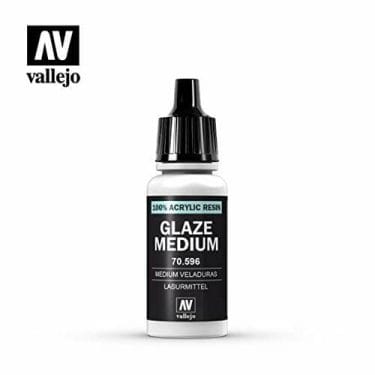
Matte mediums are often very useful for blending with layers. Pigment tin can exist thinned downwardly a lot with water, but will go besides "runny". To maintain control over your layering, mixing your paint with a glazing medium will help a lot.
Overall, at that place are many styles of layering and glazing that painters use. Some artists utilize thicker pigment and fewer layers to save time (and sanity).
Ultimately, even thicker paint applications, despite the transitions being more than visible, the result of blending with layers of pigment is quite dramatic on the tabletop.

three. Two-brush blending (or spit blending)
Past namesake, you lot'll need ii different brushes for this blending technique.
- A castor to employ pigment to the model
- Another brush to manipulate the paint's translucency while information technology is still moisture. This brush will usually be dampened with saliva or spit.
2-brush blending is a technique promoted past Privateer Printing. See video below.
To perform ii brush blending (TBB), paint is rapidly applied with the kickoff brush in a line or dot/hulk on the model surface. Then, using the second castor, the still wet paint is pushed and pulled into the desired shape and area on the model.
The primal with two-brush blending is that the 2d brush must be dampened with a blending medium (which is not the same every bit the mixing or glazing medium mentioned in a higher place).
You tin can find acrylic blending mediums online or at art stores.

Saliva is arguable the best blending medium for acrylic paints. Many avant-garde miniature painting techniques utilize saliva or spit for blending.
Whether it is condom or not is up for debate, just I personally consider information technology mostly safety for virtually light-duty hobby painting activities with acrylic model paint.
RELATED: IS ACRYLIC PAINT Brush LICKING Prophylactic?
If y'all determine to use saliva and lick your brushes, brand sure your paints are non-toxic. Paints similar P3 and Citadel paints are labeled not-toxic. But, other miniature paints may not be. Be conscientious.
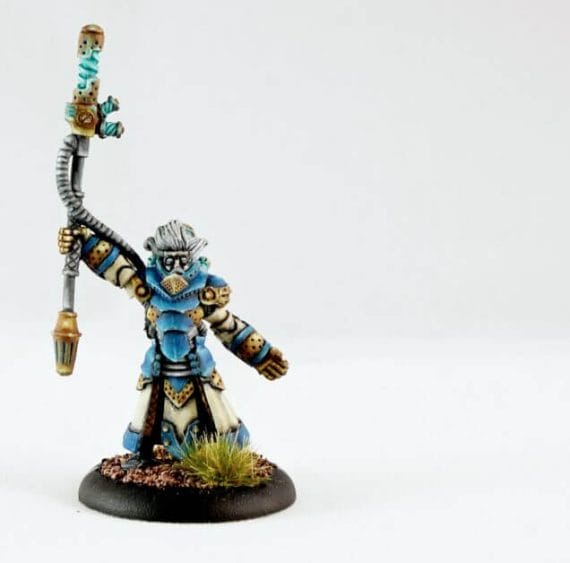
Whatever hobby or model paints that contain heavy metals, like cadmium or cobalt, tin contribute to cancer or other health issues.
Note that saliva is pretty viscous and slimy, and then pigment won't stick to your 2d blending brush. You can alloy away without likewise much trouble of wiping away your initial paint application.
What is awesome about 2-brush blending is that y'all can make huge jumps in paint color without the tedium of slow layering and glazing.
Competitor painters often use two-brush blending in speed painting contests.
The smoothness you are able to achieve with two castor blending transitions with only 2-3 layers of paint allows you to work very quickly. The time-to-completion on a model with shine paint transitions is very short indeed.
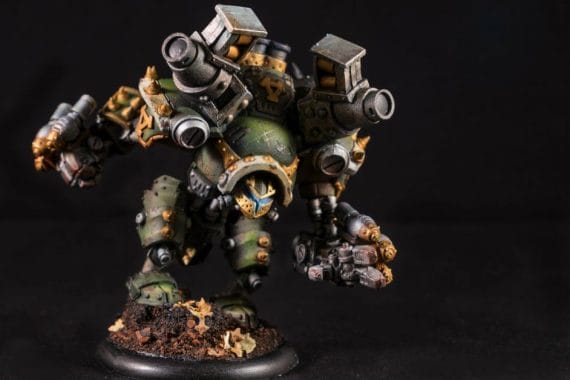
4. Feathering and loaded-brush blending
Feather blending is the foundation you need to learn before loaded-brush blending.
I put both on this list, considering in general, you'll end up wanting to try both for a lot of your miniature painting work. This is especially true if you're aspring to master the more avant-garde painting techniques.
Feathering and loaded-castor blending are both incredibly versatile and powerful methods for most any miniature painting special effect.
In feather blending, you apply a single castor with a "practiced movement" where the pigment is deposited on the model in a controlled fashion. The brush movement is a zig-zag, or dorsum-and-forth stroke, e.g., a sweeping or mopping the flooring kind of motion.
RELATED: 50 USEFUL MINIATURE PAINTING TIPS
As y'all tin meet from the instance (above), feathering provides you lot with a very fast way to apply paint and blend out the transition.
For more details on how-to-plume, check out the overview of the technique Pirate Monkey Painting.
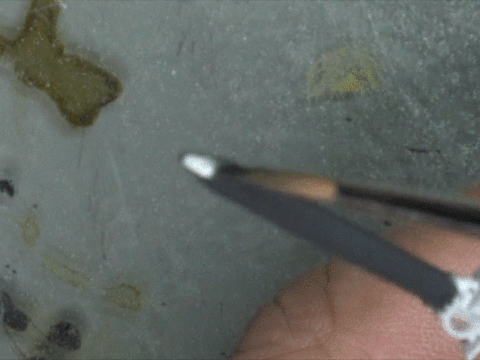
In loaded-brush blending, the two paint colors are "loaded" onto the single brush. Generally, a darker color is loaded get-go, followed past a highlight color on the brush tip.
Encounter the video beneath for how loaded-brush blending is used to paint a sword.
Loaded brush blending has become a widely adopted approached for many types of miniature painting effects, such as non-metallic metal (nmm).
If plumage or loaded-brush blending technique is followed through with a coat, the smooths can become very smooth and flossy, indeed.
As note, applying a glaze later whatever technique listed on this list will help smooth out rough areas of paint transition. Glazing is that of import to acquire if you desire smooth transitions.
READ More than: FOR A GOOD FOUNDATION, APPLY A GOOD PRIMER
With any of the more advanced paint blending techniques on miniatures, feathering and loaded-brush blending will require a lot of practice. Go on experimenting with how yous concur your brush.
Work your manner upwards to this technique by internalizing how paint behaves when it is on your castor, leaving your brush, and how paint behaves on the surface of your model.
5. Stippling
Stippling in miniature painting is the technique of applying paint with a potent brush with very piddling paint on it.
In drawing techniques, stippling is when an image is created by the combination of many "dots" placed in strategic locations.
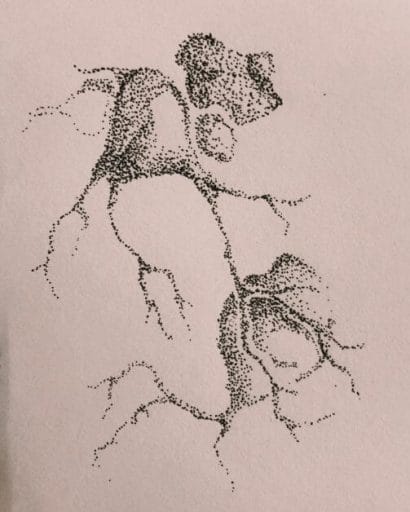
Similarly, in miniature painting, blending colors tin work through the combination of applying random "dots" of paint through stippling.
Stippling has the effect of adding texture to a miniature.
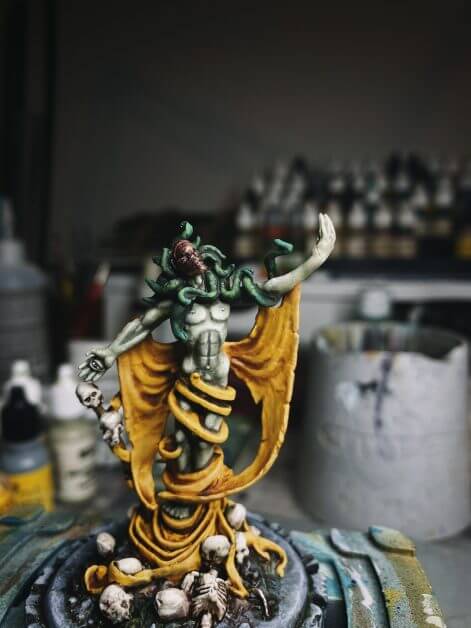
The technique of stippling in miniature painting tin can be used two ways, just is best used over a layer that has already been composite.
Using a stiff haired brush with simply a scrap of paint (e.m., like to dry out brushing), touch or tap the surface of the miniature with the tips of the bristles. You will get a stippling or dotted effect as you keep tapping the castor.
RELATED: Cheque OUT THESE Low-COST SYNTHETIC BRUSHES: GREAT STIPPLERS AND Dry out BRUSHES
For shadows, use a dark color. For highlights, use a calorie-free color. Uncomplicated equally that.

This is a slap-up technique for adding mud, dirt, or material texture to a model. When using dry pigments mix them with an acrylic medium when you apply the stippling effect. The pigments will stipple a lot meliorate, sticking to the model'south surface.
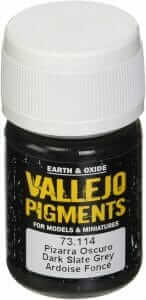
To make material look similar worn leather, you can try stippling methods shown here.
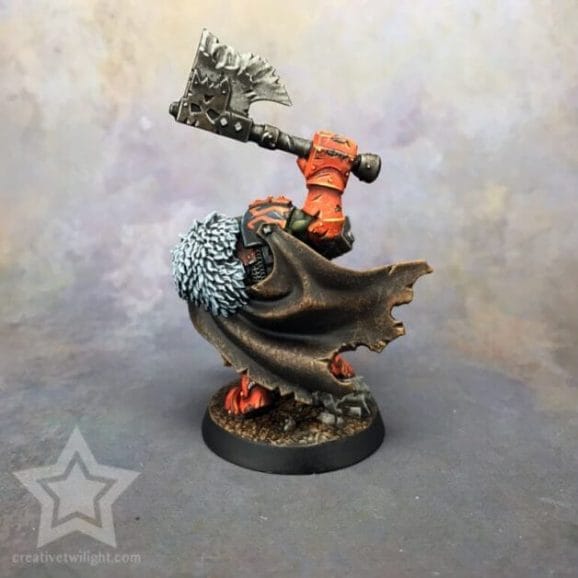
Another method for stippling is to utilize a softer natural sable brush. But, I wouldn't recommend using a make new brush as stippling tends to destroy brushes.
What you do with the softer brush is apply paint on the model with tons (I mean like a lot) of tinsy, tiny dots all over the expanse you want to have the blended, textured effect.
The easiest way to know where to put the dots is to already accept the area composite by some other method (e.yard., layering).
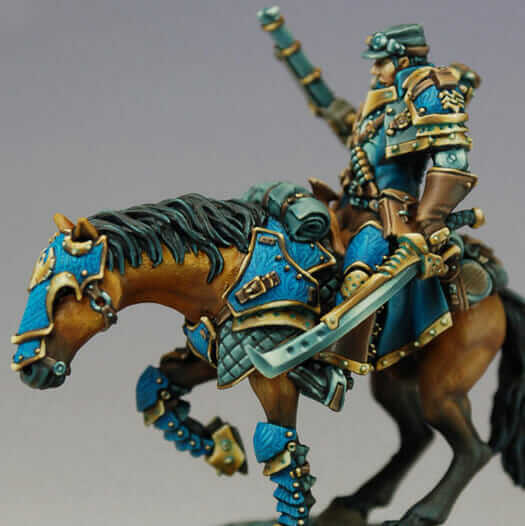
half-dozen. Airbrushing
If you lot've been a miniature painter for a while, you're already familiar with the possible outcomes with airbrushing.
Airbrushing miniatures beyond uncomplicated primer or base of operations glaze awarding (i.e., the kickoff paint layer) is an advanced technique.
RELATED: Consummate AIRBRUSH GUIDE FOR PAINTING MINIATURES
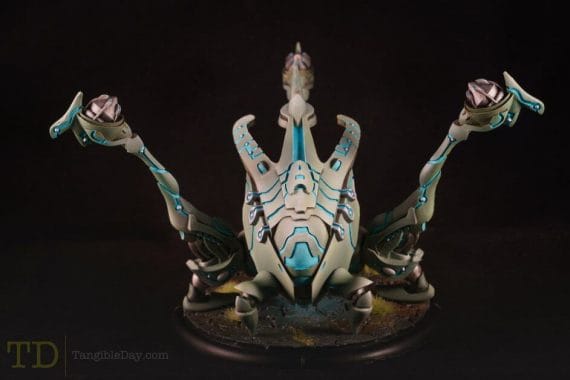
For advanced miniature painters, the skilled utilise of an airbrush can create some of the creamiest, smoothest blends on medium- to large-sized models.
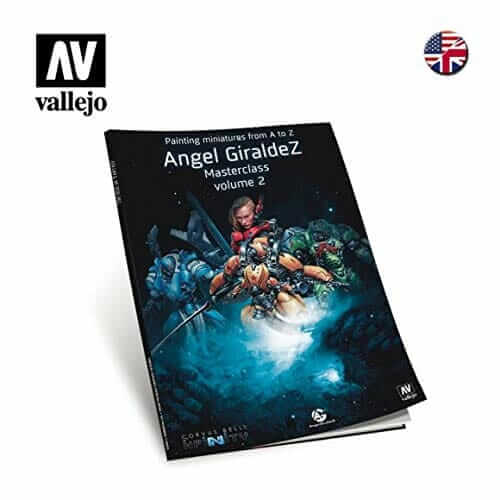
Angel Giraldez, who literally wrote the book on airbrushing miniatures in the sci-fi Infinity the Game Universe, inspired me to work with my airbrush a lot more than. For other books on how to paint miniatures, bank check out my reviews.
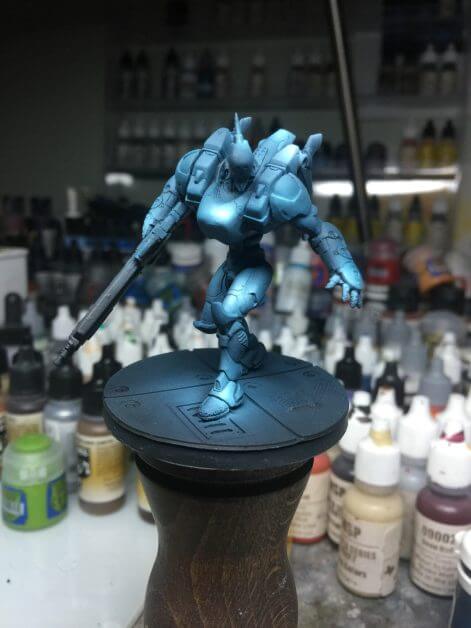

In that location are a ton of tutorials online about how to airbrush miniatures. For airbrushing, video tutorials are particularly useful.
In addition to book references, videos on airbrushing provide y'all the nuances of how pigment behaves as it travels from the nozzle.
A key aspect to using an airbrush for blending and creating polish transitions between paint colors is a firm grasp of controlling the paint spray pattern.
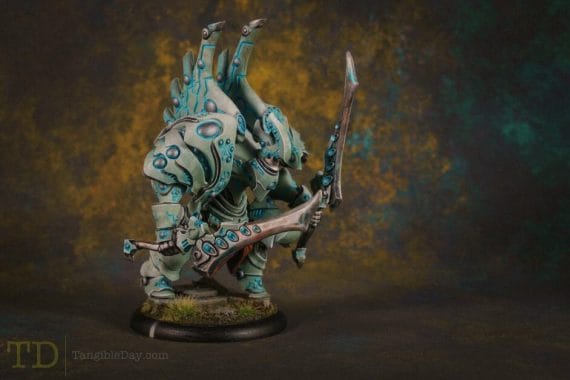
As paint leaves the nozzle of an airbrush, information technology projects outwards in a cone. The angle the cone interacts with the surface of your model, likewise equally the pressure level and amount of paint in the airflow, powerfully effects how the paint is practical.
My suggestion for those starting out with an airbrush is to play.
Yeah, just play around with your airbrush. Acquire how air pressure, paint viscosity, and distance/angle from your model effect the pigment application.
In a nutshell, airbrushing is a tool you need to larn actually well if you lot desire to blend paint colors together. Information technology doesn't accept much to make a fault with airbrush.
Check out this video below if yous're wondering what simple, simply fairly advanced things you can practise with an airbrush.
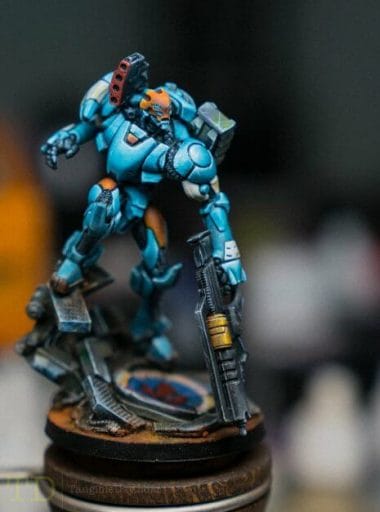
Personally, I love airbrushing my miniatures. I have probably painted one-half of my miniatures in my collection with an airbrush.
Equally a tool airbrushing provides me with ways to alloy paints, coat models, employ special furnishings in a very quick and unique way. As someone who dabbles in 3D press, an airbrush has likewise go a vital tool for painting my 3D prints.
Nonetheless, despite all the advantages of airbrushing, the tool tin can accept significant disadvantages. Good airbrushes aren't cheap.
I have a actually solid budget model (a Badger Patriot 105), but achieve for the more the detailed-oriented airbrushes for almost of the professional person work I exercise (Badger Sotar 20/20, IWATA Loftier-Line, and Harder & Steenbeck Infinity airbrushes).
Why exercise I own and so many airbrushes?

Every airbrush has a specific chore. Just as in that location is probable no best paint castor, there is no single airbrush that can exercise everything.
If you're just starting out, remember "pay for the quality you need".
Are you simply base coating your models, or are y'all trying to apply advanced paint blending techniques to your miniatures?
If yous have more than questions about airbrushing, the equipment or the technique, you can leave a annotate for me beneath. I'm happy to help!
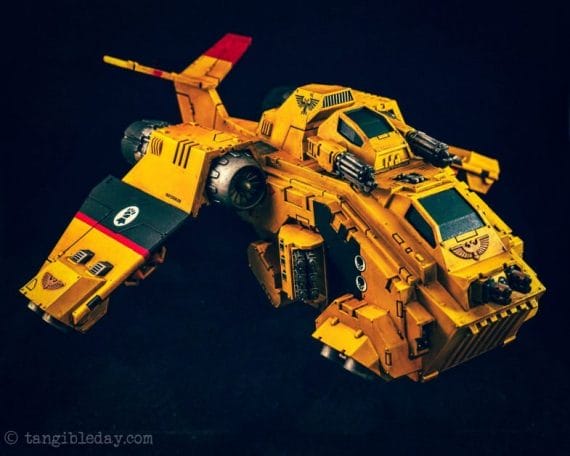
seven. Wet blending
Wet blending is one of the hardest, if not most advanced techniques for blending paint. The wet blending arroyo is the mixing of ii paint colors directly on the model, while both paints are still wet.
The hardest office virtually wet blending is maintaining control.
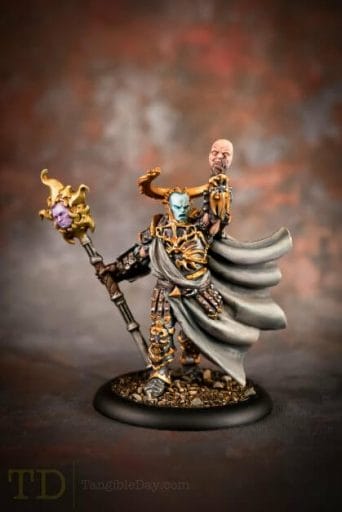
The best identify to start learning how to wet blend is on big open surfaces of a model. You start with a blob or line of one colour applied on the model, and and then with a clean brush apply the second color next to the commencement.
RELATED: HOW TO Moisture Alloy MINIATURES AND MODELS
Between the two wet paints, you leave a pocket-size gap. Using another make clean brush, you lot pull the two wet paints together, mixing them in this gap. If you've done wet blending correctly, the transition between the 2 colors is flawless.
And, that is the advantage of mastering wet-blending.
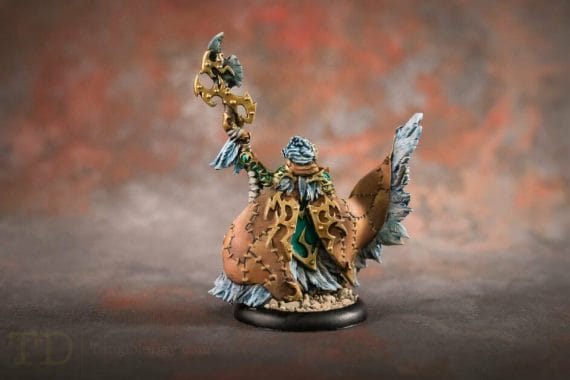
The result yous achieve with moisture-blending is theoretically above and beyond what you can achieve with whatever other blending technique. This is because the ii paints are literally mixed/blended straight on the model.
In my experience with wet blending, some pigment brands are easier to utilize than others. For instance, Citadel Paints are more difficult to wet alloy than compared with Vallejo Model Color.
I retrieve this has to do with the conception and how apace the different pigment brands dry. In general, I find Vallejo and P3 paints the easiest to moisture blend.
Another observation in regards to wet-blending: white, yellow, and orange colored paint are the hardest to wet blend on a model. For these pigment colors, I tend to apply other methods to create polish transitions.
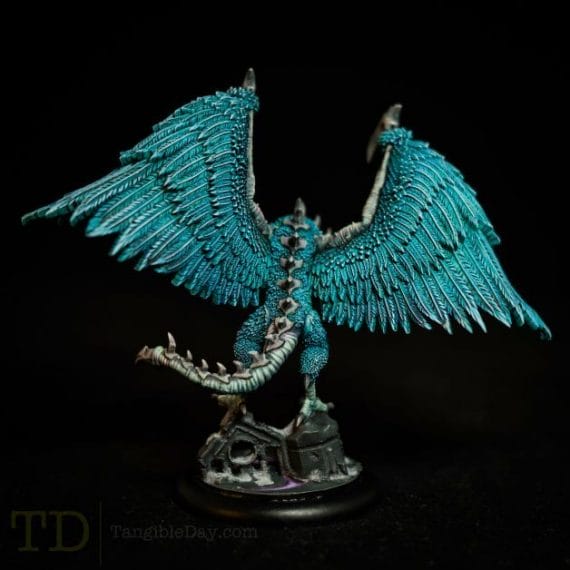
I reserve wet-blending to colors and paint brands that I know work well. You'll have to experiment and larn for yourself what works. Hopefully, I've given you a starting point if you oasis't tried already.
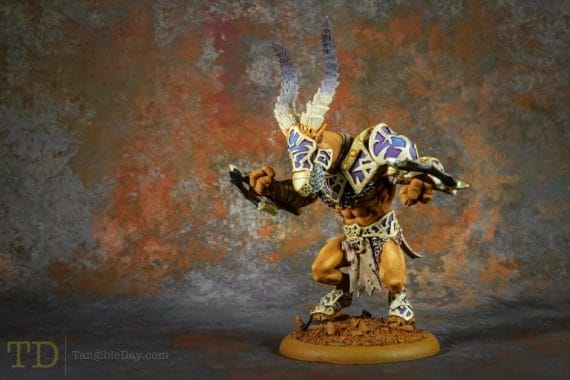
Finally, I should also add together that wet-blending works well if you lot don't thin with h2o. Water added to pigment actually speeds upwards drying in my experience. Yeah, this doesn't seem intuitive.
Every bit y'all try to moisture-blend, the more binding medium you take available, the easier time you'll have. Y'all tin can add together some paint drying retarder or give a wet palette a try (I always use a glazed ceramic dry out palette for this technique).
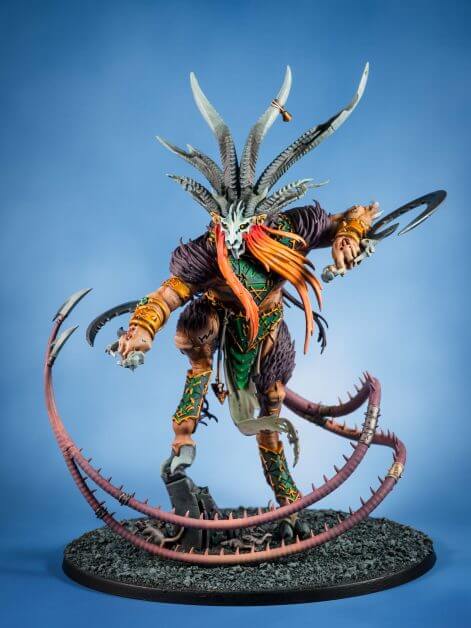
eight. Wet-in-wet blending
Some may argue this technique is easier than wet-blending. I've tried teaching this technique to many people, but only those painters who were comfortable with wet-blending (meet #7) learned this technique quickly.
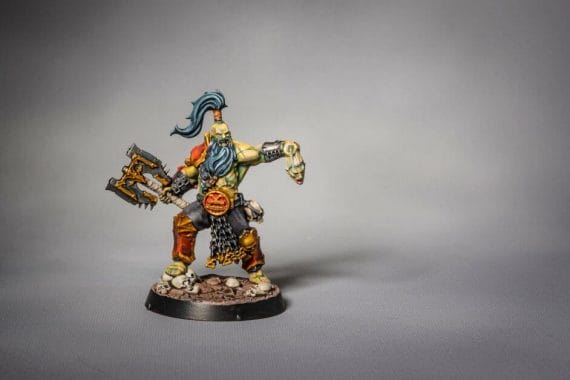
Moisture-in-wet blending is similar to moisture-blending. However, instead of 2 area of wet paint on the model, y'all first employ a layer of water to the model.
Plain water.
Moisture the entire surface you program to paint. Keep information technology pretty wet (only non so much water that yous lose control). If you prefer, yous can besides mix a little acrylic medium or pigment drying retarder into the water.
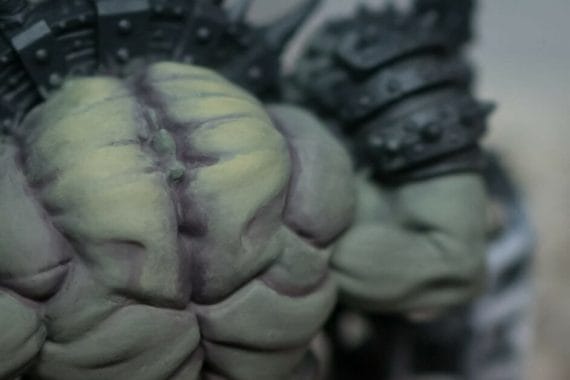
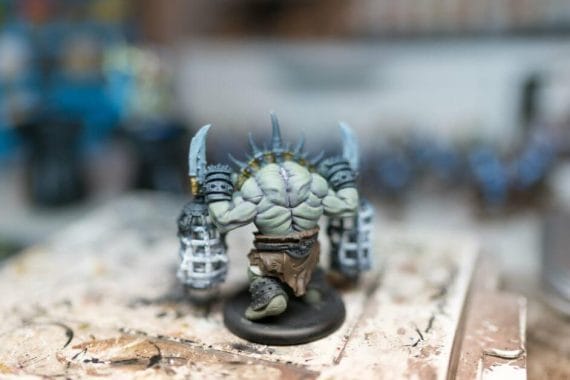
What you're looking for in this offset glaze of watery-film is a moisture surface that stays wet for a little while, just not and so much that the water runs out of command.
If yous've gotten this far, add together a slightly diluted flake of pigment into or onto the places you want.
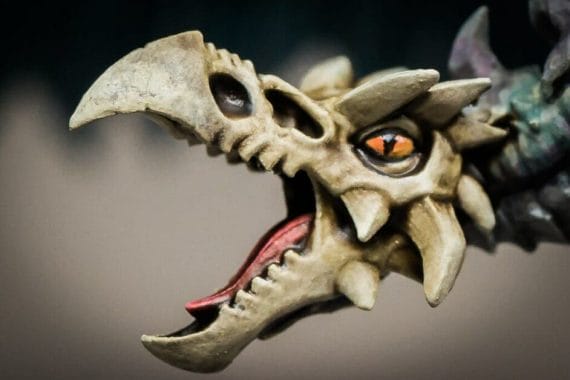
The paint will bleed into the wet surface, and lengthened out into a transition. With the tip of a clean, damp castor, you should take enough command to smooth out the diffusing pigment.
I've used this technique to slap-up effect for applying dark lining and as a substitute for glazing.
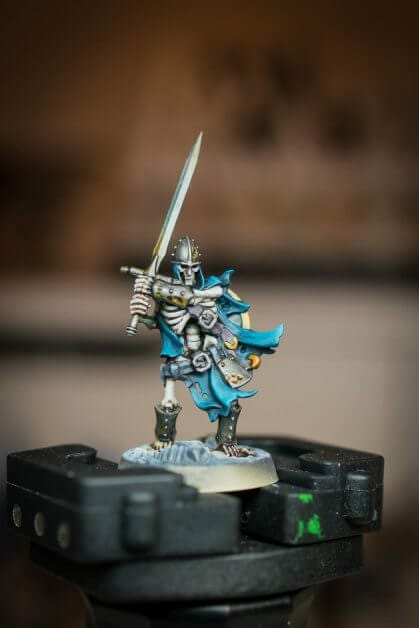
As an advanced pigment blending technique, I really prefer moisture-in-wet blending more than wet-blending, airbrushing (!), and two-brush blending.
The moisture-in-wet blending technique gives me a adept balance of control, quality upshot (e.g., smoothness), and speed.
Summary
I'chiliad certain I missed some blending techniques. There are certainly many means to do the same thing. The techniques I listed and described here are those that accept concrete utilize in painting miniatures.
- Dry brushing
- Layering and glazing
- Two-brush blending (TBB) or spit blending
- Feathering and loaded brush blending
- Stippling
- Airbrushing
- Moisture blending
- Moisture-in-moisture blending
I hope this gives you a good overview of the possible methods you lot can employ to paint your models. Maybe, I've even inspired yous to endeavor a new technique. Let me know!
Happy painting!
Enjoying your visit? Join Tangible Day
Free newsletter with monthly updates (no spam)
Leave a comment below! Follow on Twitter, Instagram, and Facebook.

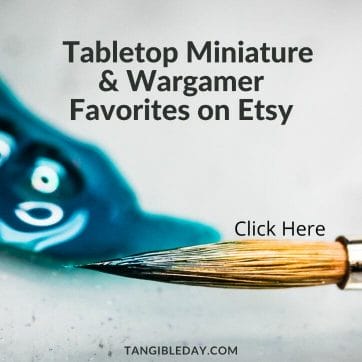

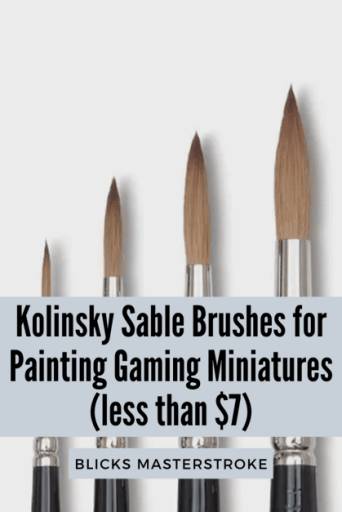
Source: https://tangibleday.com/8-must-know-paint-blending-techniques-for-miniatures/
Posted by: keyyouts1951.blogspot.com


0 Response to "How To Blend Colors In Paint"
Post a Comment